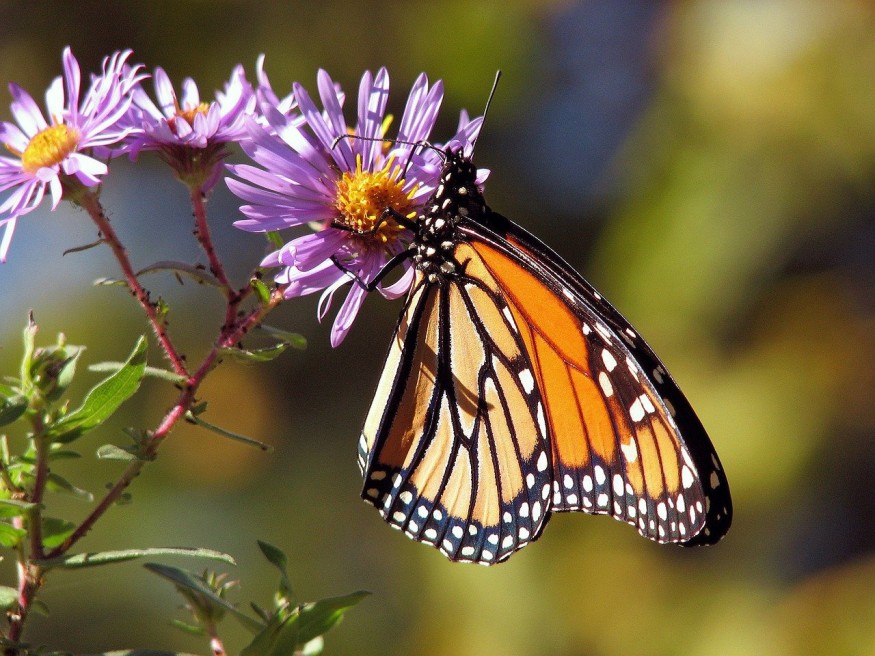In 2013, scientists said that around five out of the millions of invertebrates, including butterflies, were at risk of extinction. These beautiful creatures have shown signs of a significant decline in population and conservationists have been fighting for a law to be implemented to protect butterflies.
The annual Big Butterfly Count in the UK, initiated by the charity called Butterfly Conservation, encourages the public to count the number of butterflies they see over the next three weeks to help conservationists in their work to protect these species. The charity, backed by Sir David Attenborough, who is also its president, said that around two-fifths of British butterflies are under threat.

Why Join in The Big Butterfly Coun
Butterfly Conservation encourages the public to spend at least 15 minutes outside to count the number and type of butterflies and moths they can spot. The annual event is also supported by actress Joanna Lumley and gardener Alan Titchmarsh.
Experts said that the data collected will help scientists understand how climate change and pollution affect insects and gather data from places that sometimes go unrecorded, BBC reported.
Studies show that rare species are at risk of extinction, and common butterflies, such as the small tortoiseshell, have fallen by 79% since 1976. In 2021, the United Kingdom (UK) submitted the lowest average number of butterflies logged at only 150,000 to the Big Butterfly Count. The declining numbers were first observed 13 years ago.
The royals are also participating in the event as Princess Charlotte was seen with a Red Admiral butterfly that she found in their family's Norfolk home. Butterfly Conservation's senior survey officer Dr. Zoe Randle said that they at the charity are grateful to the British public for participating in the annual event.
The annual Big Butterfly Count is the largest natural history citizen scient project involving insects that provide scientists insights into the current state of butterflies. More so, it could be used as an early warning system that documents how environmental changes affect insects.
The counting event runs from July 15 to Aug. 7 and people are asked to send their findings to the charity's application or through their special website.
ALSO READ: Butterflies Can Break Off Wing Tails Easily to Escape Predators, Study Suggests
Factors in the Disappearance of Butterflies
The Encyclopedia Britannica's Saving Earth has listed some factors that could cause the disappearance of butterflies not only in the US but also in other places. Here are the following:
Habitat Destruction
Two butterfly species in South Florida were officially declared extinct in June 2013 after extensive searches conducted for over a decade where they could no longer find the Zestos skipper (Epargyreus zestos oberon) and the rockland grass skipper (Hesperia meskei pinocayo).
Human development in Florida is largely blamed for the destroyed habitats of many species in the area. Residential and commercial development in Florida has been responsible for habit fragmentation and this might also be the same in other places.
Invasive Species and Poorly Managed Pesticides
Florida harbors lots of mosquitos and pesticides used to control them have shown that they could also adversely affect butterflies. Additionally, wildlife managers are worried that invasive species kill butterflies. Some of these species include the fire ants that egg butterfly eggs and caterpillars, as well as the African snail that destroys host-plant vegetation.
Global Warming and Climate Change
Global warming and climate change have been well documented and its effects could sometimes be colder, wetter, or drier weather, which are factors that affect plants and animals that are hard to predict. Some may benefit from it, but most changes in the natural state of global ecosystems negatively affect organisms, including butterflies.
Check out more news and information on Butterflies in Science Times.
© 2025 ScienceTimes.com All rights reserved. Do not reproduce without permission. The window to the world of Science Times.












